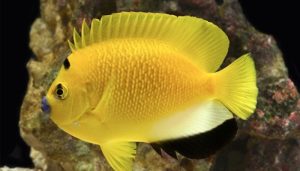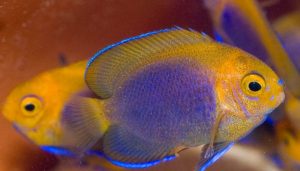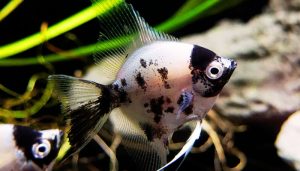What is the Average Mystery Snail Life Expectancy? If you’ve ever been captivated by the serene beauty of a mystery snail gliding gracefully across the glass of your aquarium, you’re not alone. On average, a mystery snail has a life span of 1–2 years. However, this can vary based on factors such as water quality, diet, and tank conditions.
These fascinating creatures, with their vibrant shells and charming behavior, are a popular addition to many aquariums. But how long can you expect your shelled companion to stick around?
Understanding the life expectancy of mystery snail is essential for providing the best care and setting realistic expectations for their time with you.
Whether you’re a seasoned aquarist or just starting, knowing what affects their lifespan can make all the difference in keeping these snails happy and thriving. so, How long do mystery snails live in captivity?
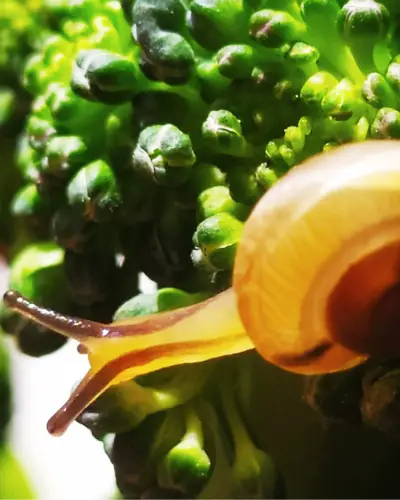
With proper care, including a stable environment and a nutritious diet, some mystery snails may even live slightly longer. Ensuring their habitat meets their specific needs is key to extending their life and enjoying their charming presence in your aquarium for as long as possible.
Curious to learn how to maximize their lifespan and what you can do to give them the best life? Let’s dive deeper into the world of mystery snails!
Table of Contents
ToggleWhat is the Mystery Snail Life Expectancy?
The mystery snail has a relatively long life expectancy compared to other snail species, with an average lifespan of 1-2 years. With proper care, some mystery snails have been known to live up to 5 years or more.
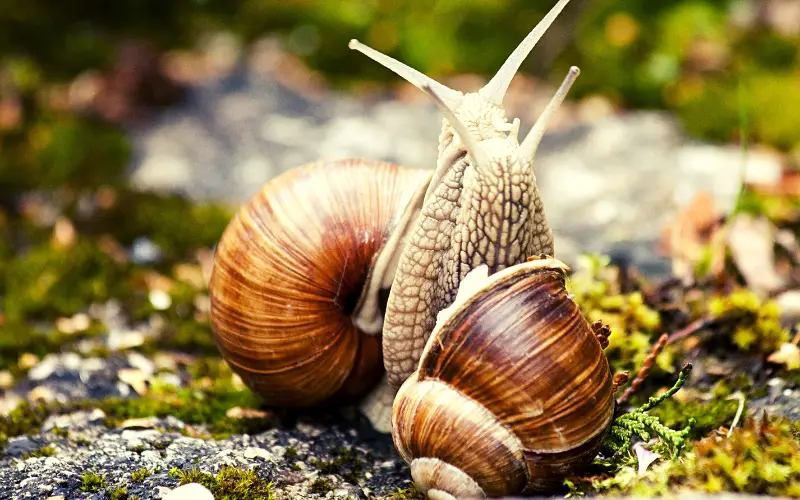
Factors that can affect the life expectancy of a mystery snail include water quality, diet, and access to suitable calcium for shell growth. Maintaining a stable and clean aquarium environment with a balanced diet can help ensure that mystery snails live long and healthy lives.
It’s essential to provide them with various foods, such as algae wafers, blanched vegetables, and calcium supplements to support their overall health and shell development. Gold Inca snail can thrive and live to their full potential in the aquarium by meeting their specific care requirements.
Mystery Snail Life Expectancy & How to Double Their Years!
Mystery snails are popular aquarium additions, loved for their fascinating behavior and ability to help clean tanks. On average, mystery snails have a life expectancy of 1 to 2 years, but with the right care, you can potentially extend their lifespan to 3 years or more. Here’s how you can double their years:
1. Provide Optimal Water Conditions
Mystery snails thrive in clean, stable water with these parameters:
- Temperature: 68°F to 82°F (20°C to 28°C)
- pH Level: 7.5 to 8.5 (alkaline water is essential for shell health)
- Hardness: Medium to high (calcium-rich water to maintain strong shells)
- Regular water changes and a good filtration system prevent ammonia and nitrite spikes, which can be deadly.
2. Feed Them a Balanced Diet
While mystery snails can graze on algae, they need more for proper nutrition:
- Vegetables: Blanched zucchini, spinach, or cucumbers.
- Calcium-Rich Foods: Cuttlebone, eggshells, or calcium-enriched pellets to strengthen their shells.
- Avoid overfeeding to maintain water quality.
3. Protect Their Shells
Damaged shells can shorten a snail’s life. To prevent this:
- Use a soft substrate like sand instead of sharp gravel.
- Avoid aggressive tankmates that might attack or damage their shells.
- Add calcium supplements to the water if it lacks hardness.
4. Prevent Predation and Stress
Stress can weaken your mystery snail and reduce its lifespan:
- Keep them with peaceful tankmates (e.g., tetras, guppies, or mollies).
- Avoid predators like cichlids or loaches.
- Ensure the tank isn’t overcrowded, as snails need space to explore and feed.
5. Monitor Their Health
Regularly check for:
- Shell Deterioration: Indicating calcium deficiency.
- Lethargy: Could mean poor water quality or illness.
- Floating Behavior: Sometimes normal but can signal trapped air or health issues if prolonged. Treat any problems promptly to prevent further complications.
By following these steps, you can significantly increase the life expectancy of your mystery snails. With proper care, they’ll reward you with their beauty and hard work for years to come!
The Average Lifespan of a Mystery Snail: (Mystery Snail Lifespan)
What is the life expectancy of a mystery snail? Mystery snails (Pomacea bridgesii), those charming little scavengers in your aquarium, have an average lifespan of 1 to 2 years. However, just like us, their actual lifespan can vary depending on several factors:
- Water quality: Stable and clean water is crucial. Poor water conditions can shorten mystery snail lifespan significantly.
- Diet: A varied and nutritious diet of algae, vegetables, and fish flakes will keep them healthy and happy.
- Temperature: Cooler water temperatures slow their metabolism and potentially lengthen their lives.
- Stress: Avoid introducing stressors like aggressive tankmates or sudden changes in water parameters.
- Genetics: Some snails have better genes for longevity than others.
That said, some exceptional mystery snails have been known to live up to 3 years, or even Inca snails may live longer with outstanding care. While this isn’t the norm, it’s a testament to their resilience and adaptability.
Here are some things you can do to maximize your mystery snail’s lifespan:
- Maintain stable water parameters like pH and temperature.
- Perform regular water changes to remove waste.
- Offer a varied and nutritious diet.
- Avoid overcrowding the tank.
- Quarantine new fish before adding them to the tank to prevent the introduction of diseases.
Providing your apple snail with a good environment and proper care can help them live a happy and healthy life for as long as possible.
Mystery Snail Behavior & Temperament
Mystery snails are known for their calm and peaceful behavior, making them great additions to freshwater aquariums.
These snails are generally non-aggressive towards other tank mates and spend much of their time efficiently scavenging for food sources. They exhibit interesting behaviors, such as climbing to the water’s surface to breathe air or hanging onto the aquarium glass.
Mystery snails are also known for their unique mating rituals, where they lay their eggs above the water line to protect them from potential predators. Their temperament can vary slightly depending on individual snails, with some being more active and curious than others.
Overall, mystery snails are a low-maintenance and fascinating invasive species, making them popular for aquarists looking to add diversity to their tanks. With their peaceful behavior and exciting habits, mystery snails are a delightful addition to any freshwater aquarium.
Ideal Water Parameters & Tank Conditions for Mystery Snails
Mystery snails are adorable and helpful residents of freshwater aquariums, but like any creature, they thrive under specific conditions. Here’s what you need to know about ideal water parameters and tank setup for happy, healthy mystery snails:
Water Parameters:
- Temperature: Mystery snails prefer a tropical environment, with a temperature range of 70-78°F (21-26°C). Avoid sudden fluctuations in temperature, as this can stress them.
- pH: A slightly alkaline pH of 7.2-8.4 is ideal. Lower pH levels can erode their shells, while higher levels can affect their ability to regulate their internal salt balance.
- Hardness: They do best in hard water, with a General Hardness (GH) above 150 ppm (8 degrees) and a Carbonate Hardness (KH) of 12-18. More challenging water provides the calcium and minerals they need for healthy shell growth.
- Ammonia, Nitrite, and Nitrate: Keep these levels at zero. Snails are sensitive to poor water quality, and high levels of these toxins can be fatal. Regular water changes and a good filtration system are essential.
Tank Conditions:
- Tank Size: A 5-gallon tank is the minimum for one or two snails, but bigger is always better. They love to explore and graze, so provide ample space.
- Decoration: Include hiding places like rocks, driftwood, and plants. Aquarium plants also help improve water quality.
- Substrate: Choose a fine sand or gravel substrate. Avoid sharp rocks or decorations that could damage their delicate bodies.
- Lid: A secure lid is crucial, as mystery snails are adventurous explorers and might wander out of the tank.
- Water Movement: While they can adapt to various flow rates, moderate water movement with good oxygenation is ideal.
Following these guidelines, you can create a perfect habitat for your mystery snails to thrive and add their unique charm to your aquarium. Remember, consistency is vital – stable water parameters and good tank maintenance are essential for their long-term health and happiness.
Mystery Snails Care In Freshwater Tanks (Proper Care Secret tips)
Proper care for these freshwater snails involves ensuring a clean and well-maintained tank with appropriate water parameters, including a temperature between 68-84°F and a pH level between 7.0-8.0.
To ensure they receive the necessary nutrients, it’s essential to provide a varied diet for mystery snails, including algae wafers, blanched vegetables, and commercial snail food.
Additionally, mystery snails require a source of calcium, such as cuttlebone or calcium-rich foods, to maintain a healthy shell. Providing hiding spaces and vegetation for these snails to explore and feel secure in their environment is also crucial.
Another critical factor in mystery snail care is ensuring that they are not exposed to any copper-based medications, which can harm their health. By following these proper care tips, apple snail owners can enjoy the presence of these fascinating creatures in their freshwater tanks for years to come.
Mystery Snail Diet, Feeding & Natural Habitat
Mystery snails are omnivorous scavengers, meaning they eat various things, making them great additions to a well-maintained tank.
Diet:
- Algae: Apple snails love all kinds of algae, including soft biofilm, hair algae, and even brown algae. They’ll happily clean your tank surfaces and keep algae growth under control.
- Detritus: This organic matter comprises decaying plant and animal material, leftover fish food, and other waste. Mystery snails help break down residue, keeping your tank clean and healthy.
- Blanched vegetables: Offer them blanched zucchini, spinach, cucumber, or carrots as occasional treats. These veggies provide essential vitamins and minerals for healthy shell growth.
- Commercial foods: Sinking fish pellets, algae wafers, and even calcium-rich foods like Hikari Crab Cuisine or Repashy Gel Food can supplement their diet.
Feeding:
- Mystery snails aren’t picky eaters, but overfeeding can harm water quality. Feed them once or twice daily, only offering what they can finish within a few hours.
- Provide a variety of foods to ensure they get the nutrients they need.
- Avoid copper-based medications or algaecides, as these are toxic to snails.
Habitat:
- Mystery snails prefer aquariums with at least 10 gallons of water per snail. A larger tank is always better, especially if you have multiple snails.
- They need hiding places like rocks, driftwood, and plants to feel secure. Live plants also provide additional grazing and oxygenation.
- Maintain a stable water temperature between 70-80°F and a pH range of 6.5-7.5. Regular water changes are essential for good water quality.
Remember: Including plants in the tank is crucial as they are the primary and essential elements. Given that these snails dedicate a significant portion of their time to scavenging for small pieces of plant matter, having an aquarium devoid of vegetation lacks practicality.
Mystery Snail Tank Mates and Compatibility
Mystery snails are peaceful creatures and can be great tank mates for various fish and invertebrates. They are compatible with most freshwater fish species if they are not known to be aggressive or fin-nipping.
Good tank mates for mystery snails include peaceful community fish such as tetras, guppies, mollies, and corydoras catfish. It is important to avoid keeping mystery snails with aggressive or predatory fish, as they can quickly become targets for aggression.
In addition to fish, mystery snails can also coexist happily with other peaceful invertebrates, such as shrimp and tiny snails. It is essential to consider the size of the tank and provide enough hiding spots and plants for all creatures to feel comfortable.
Mystical snails can make excellent tank mates if housed with compatible species and in a suitable environment.
Predators and Life Span of Wild Mystery Snails
Life in the wild for mystery snails is precarious, filled with lurking predators and environmental challenges. Due to these constant threats, their average lifespan of 1-2 years is significantly shorter compared to the 3-5 years they can achieve in captivity.

Predators:
- Fish: Large fish like bass, sunfish, and catfish readily snack on mystery snails, easily crushing their shells with their powerful jaws.
- Birds: Ducks, geese, and other aquatic birds have a taste for snails and will readily pluck them from the water or scavenge them on the shoreline.
- Mammals: Muskrats, raccoons, and even otters are opportunistic predators that won’t hesitate to munch on a slow-moving snail.
- Other Invertebrates: Crayfish, crabs, and even larger aquatic insects can crack open a mystery snail’s shell with claws or pincers.
Life Span Factors:
- Predation: As mentioned above, predators significantly shorten the lifespan of wild mystery snails.
- Habitat Quality: Water quality, food availability, and resource competition affect a snail’s survival. Poor conditions contribute to a shorter mystery snail lifespan.
- Disease: Parasites and other diseases can weaken and kill snails, especially in stressful environments.
- Temperature Fluctuations: Extreme temperature changes can be fatal for mystery snails, as they are cold-blooded.
Adaptations:
To cope with these challenges, mystery snails have developed some clever adaptations:
- Hard Shell: Their sturdy shell protects from predators and physical damage.
- Operculum: They can seal themselves inside their shell with a hard trapdoor called an operculum to avoid predators or unfavorable conditions.
- Slime: Their slimy coating can deter some predators and help them glide over rough surfaces.
- Reproduction: Mystery snails lay large clutches of eggs to ensure the survival of their offspring, even if many individuals fall prey to predators.
Despite these adaptations, the life of a wild mystery snail is often cut short. However, their resilience and adaptability have allowed them to thrive in diverse aquatic environments worldwide.
Similar Freshwater Snails
Similar to the Inca Snail, several other species of freshwater snails are popular among aquarium enthusiasts. Nerite snails are a common choice, known for their striking striped shells and ability to clean algae from tank walls. They are small and peaceful, making them a great addition to community tanks.
Another popular option is the Ramshorn snail, which has a flat, coiled shell and comes in various colors, including red, brown, and blue. Like the Mystery Snail, Ramshorn snails are great at cleaning up excess food and debris in the tank.
Malaysian trumpet snails are another similar option, known for their conical shells and ability to burrow into the substrate, helping to aerate and clean the gravel. These ivory snails are all relatively easy to care for and can benefit a freshwater aquarium, providing both aesthetic appeal and practical benefits for tank maintenance.
Commonly Asked Questions about How Long Do Aquarium Snails Live (FAQs)
Do all snails have such short life spans?
No, not all snails have short lifespans! While some smaller species live only 1-2 years, larger land snails can live for 5-10 years, and some deep-sea giants even up to 100 years!
What is the average life span of a mystery snail?
The average lifespan of a mystery snail is 1-2 years, but with reasonable care, some can live up to 3!
What are the different mystery snail colors and patterns?
Mystery snails come in a rainbow of shell colors like yellow, green, purple, and white, often with stripes, spots, or even gradients! Their bodies can be dark grey, yellow, or even blue, adding to their charming variety.
How to breed Mystery Snails?
To breed Mystery Snails, provide a well-maintained aquarium with stable water conditions, a pH of 7-8, and a temperature around 70-80°F. Add a male and female snail, and they will lay eggs above the waterline.
How long do mystery snails live in captivity?
In captivity, mystery snails typically live 1-2 years, but with optimal care, some can reach a happy three years! Water quality, diet, and stress all affect their lifespan.
How can you tell how old a mystery snail is?
Determining the age of a mystery snail can be challenging as it requires examining growth rings on its shell. Counting these rings can provide an estimate, but it is only sometimes precise.
Do mystery snails need new shells?
Nope! Mystery snails keep and build upon their shell throughout their lives. They’re attached, and it grows with them, unlike hermit crabs!
How do you keep mystery snail shells healthy?
To keep mystery snail shells healthy, maintain proper water quality with appropriate pH and hardness levels. Provide a calcium source like cuttlebone and ensure a balanced diet with calcium-rich foods.
How big will mystery snails get?
Most mystery snails reach a mature size of 2-3 inches in diameter, though some stay smaller at 1-1.25 inches. Remember, their final size depends on genetics and tank conditions.
Where are mystery snails from?
Mystery snails hail from the freshwater rivers and lakes of South America, particularly regions like Argentina, Bolivia, and Brazil.
Are mystery snails hard to keep alive?
No, mystery snails are not hard to keep alive. They thrive with proper care, including clean water, a balanced diet, and a stable tank environment free from predators.
How to know if a mystery snail dies?
To know if a mystery snail dies, check for a foul smell, no movement for days, or a hanging, unresponsive body outside its shell. Confirm with gentle prodding.
What is the longest lifespan of a snail?
The longest lifespan of a snail is up to 25 years, observed in some larger land snail species like the Roman snail under ideal conditions with proper care and environment.
Conclusion
In conclusion, the mystery snail has a relatively short life expectancy than other freshwater snails. With proper care and maintenance, mystery snails can live up to 1-2 years in captivity. However, various factors, including water quality, diet, and tank mates, can affect their lifespan. Providing a clean and well-maintained aquarium with suitable water parameters is crucial for maximizing the lifespan of mystery snails.
Additionally, a balanced diet of vegetables, sinking pellets, and calcium-rich foods will contribute to their overall health and longevity. As with any living creature, genetics also play a role in determining the Mystery snail life expectancy. Therefore, aquarium hobbyists need to be mindful of these factors to ensure their mystery snails’ well-being and longevity. With proper care and attention, mystery snails can live a fulfilling life in a home aquarium environment.
You might also like
- Best Mystery Snail Food: Feeding Tips & Tricks (for Success)
- Why is My Mystery Snail Hanging Out of Shell: (Solved)
- Gold Mystery Snail Care 101: A Comprehensive Beginners Guide!
- How Long Do Mystery Snails Live: (Unveiling the Mystery)
- The Ultimate Apple Snail Care Guide for Aquarium Owners
- How Big Do Mystery Snails Get: A Comprehensive (Care Guide)
- What to Feed Mystery Snail in Aquarium: (A Complete Guide)
- The Benefits of Using Cuttlebone for Mystery Snails in Your Aquarium
- Ivory Mystery Snails 101: Diet, Care, Size, Lifespan & More!
- How Do I Know If My Mystery Snail Is Dead or Sleeping (Proven)


